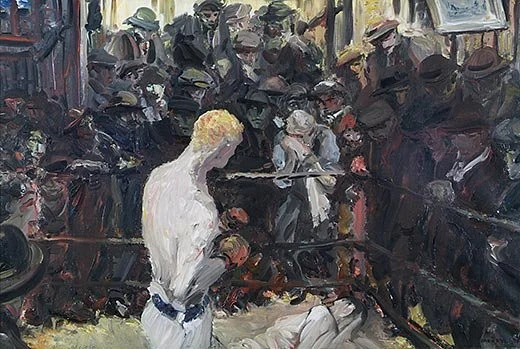Concussions & the End of Sports
In 1889 the last sanctioned bare-knuckle boxing match in the United States took place, a bout won by champion boxer John L. Sullivan; one of the first recorded uses of the helmet in American football occurred in 1893. Turn of the century sports are generally regarded as ‘barbaric’ in comparison to modern equivalent games due to safety concerns such as these. That decade or so was a ‘come-to-Jesus’ moment of sorts, make-or-break time, where the sports changed for the better or ended. And with the passing of 100+ years we’re at another one of those turning points.Until the early/mid-2000s little to nothing was known about the lasting effects of concussions. The reaction, in most scenarios, was to just walk off the concussion, and if one was still groggy after a while, take some rest. As a few years passed, and tragedies struck, more began to be thought of the long-lasting effects of concussions; people began to think not just about what happens when an athlete suffers a severe concussion but about the effect of successive head trauma. The science of testing these effects, even in 2016, on living people is very new, but it is always progressing.The solution of the Victorian era will not help today. In fact, some would say that it did not work then; an argument has been put forward that when there is an element of protection athletes become more reckless. This point of view would say that bare-knuckle boxers, under more financial pressures than modern pugilists, would generally avoid strikes to the head of the opponent as a break of their own wrist (and loss of potential future wages) was as likely as a knockout. A modern boxer does not have these concerns. The same comparison could be made between gridiron & rugby, and the significantly lower levels of shoulder & neck injuries in the latter.So more padding & protection doesn’t work; but are concussions & head-trauma that bad? The answer is, unequivocally, yes. A recent study conducted by Ulster University discovered that one in five injuries in schoolboy rugby is a head injury. That statistic is incredibly scary when we are still discovering the lasting effects of head trauma. Daniel Bryan (real name Bryan Danielson), a professional wrestler who was recently forced to retire due to the massive amount of concussions endured in his 17-year career, is by all reports an incredibly intelligent, articulate person; yet he was still forced to retire, looking at similarly intelligent wrestlers from the past, Nick Bockwinkel & Red Bastien, who suffered from alzheimer's & dementia in their later years.Should this be the end of sport as we know it? Yes, in my opinion, it does. Take MMA: UFC (and most MMA organisations around the world) recently banned the use of IV drips in weight-cuts before fights. The idea is that a fighter, being naturally heavier than the weight class they fight in, will cut, or rapidly lose, weight in order to appear lighter than they are and have a weight advantage over their opponent. Conor McGregor, after the weigh-in for his fight with José Aldo for the Featherweight (136-145 pounds) title, reportedly weighed around 175 pounds by the time he walked into the cage. The reason IV drip usage was banned was to discourage the dehydration fighters go through to make weight cuts following the link between dehydration and post-concussion issues. This is an example of the dangerous culture in what has been described as the fastest growing sport in the world, and its effects are not limited to post-concussion issues: in Bellator, a rival MMA promotion, inexperienced fighter Dada 5000 went without any liquids for weeks in an effort to cut massive amounts of weight for his fight. During his fight with Kimbo Slice he collapsed, his heart reportedly stopping.While some will say that we must continue the research into post-concussion issues without stopping our sporting traditions, there are two things I cannot move past: the risk of young athletes ruining their lives while they do not know enough to make an informed decision and one incident in particular. In June 2007 Canadian professional wrestler Chris Benoit was found dead in his home, alongside his wife & son. Benoit, having murdered his wife Nancy & son Daniel, placed bibles by their bodies and hung himself with weight-lifting equipment. During the autopsy it was discovered that Benoit had the brain equivalent of a 90 year old Alzheimer’s patient. Described by all around him as a generally kind man, close friends of his still find it hard to believe he could commit such an act even a decade after the incident. We, as a society, cannot risk people’s lives, people’s futures on our own enjoyment. We must have that ‘come-to-Jesus’ moment, and we must have it soon.


